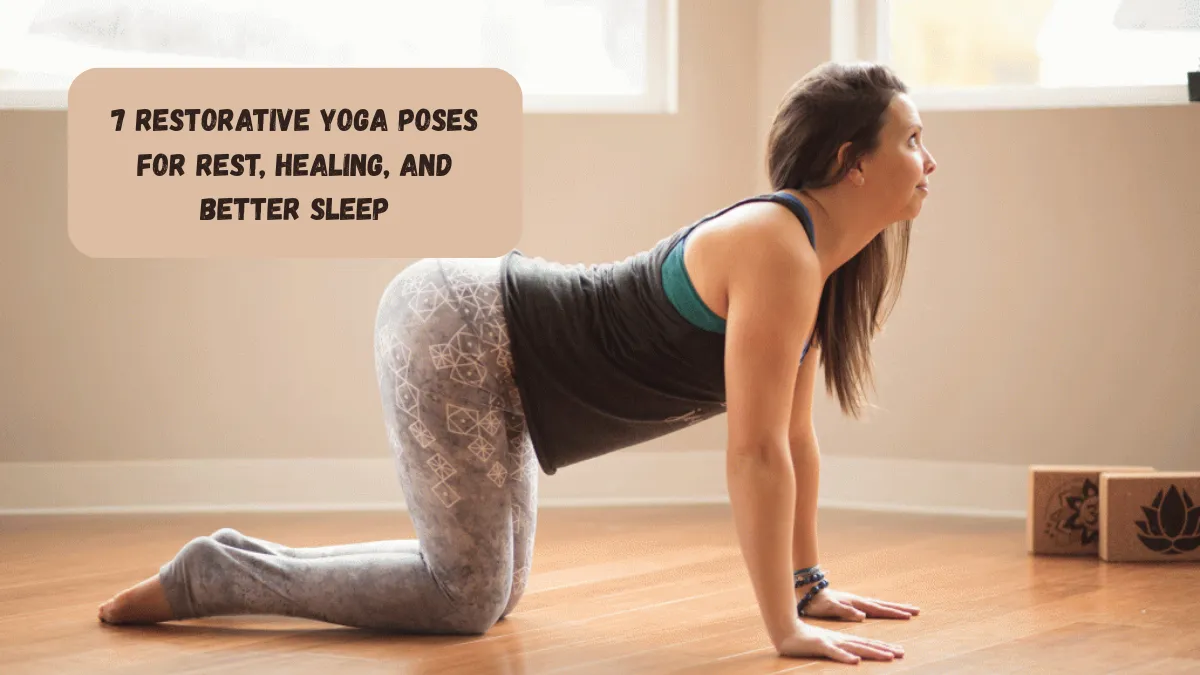Relaxing and renewing your mind and body are benefits of restorative yoga. Restorative yoga exercises are different from other types of yoga because they support the muscles and spine while they rest. The main goal is to reduce stress and strain. Hold each pose for three to five minutes at a time. Then, as you feel ready, slowly add more time.
1. Supported Fish Pose
You are in a gentle backbend in the supported fish pose. You can use a cushion, a pillow, or folded blankets to help you while you do the following:
Place your feet wide apart in front of you.
Lay a cushion or a pillow folded in half across the ground directly behind you to support your back.
Lay back on the cushion, pillow, or folded blanket slowly.
Stretch your arms out to the sides and put your hands facing up.
Hold this pose for five minutes.
Putting a rolled-up towel under your knees can help your back feel better.
2. Child’s Pose
You can relax in the child’s pose by putting folded blankets or pillows under your body like this:
Put your big toes together and spread your knees out so they are comfortable.
Lay your blankets or pillows out in front of you, lengthwise.
Lay your body on top of the pillows and rest your hands on the floor above you or by your sides (across from your legs).
To change the pose, turn your head to one side and then the other side.
3. Corpse Pose
The usual way to rest in corpse pose, which is used in many types of yoga, is to do it like this:
Lie on your back.
Spread your legs apart a little and let your toes point out to the sides.
Put your arms out to your sides and turn your palms up.
4. Legs-Up-the-Wall Pose
This legs-up-the-wall pose not only helps you relax, but it also makes your blood flow better:
Lay on your side with your right hip against the wall.
Lay on your left side, then turn over and put your feet up against the wall.
Lay on your back with your legs straight out on the wall.
Put your arms at your sides with the hands facing up.
5. Resting Pigeon Pose
This article explains the relaxing pigeon pose, which makes the hips more flexible and helps you relax:
Get down on your knees and hands.
Bring your right knee up to your right wrist. At the same time, put your left foot where it feels good between your left wrist and knee. Put your leg down.
Put your left foot back straight.
Put a pillow or towel that has been folded in half under your right hip and another one in front of your chest.
Turn your hips forward and rest your upper body on the pillows.
Do this pose again on the other side.
6. Adept’s Pose
To do Adept’s pose, which is a sitting rest pose, do the following:
Place yourself on something solid.
When you cross your legs, bring the bottom of each foot to the thigh of the person across from you.
Put your outside knees on the ground. For support, fold up a blanket or pillow and put one under each knee if you need to.
Straighten up your back and put your hands on your legs.
7. Seated Forward Bend
Some people find it helpful to put folded blankets or pillows on top of their legs to support their upper bodies during this sitting forward bend:
Place your feet wide apart in front of you.
Bring your hips forward and reach your hands down to your toes.
Lay your body on your legs and keep your neck straight.

